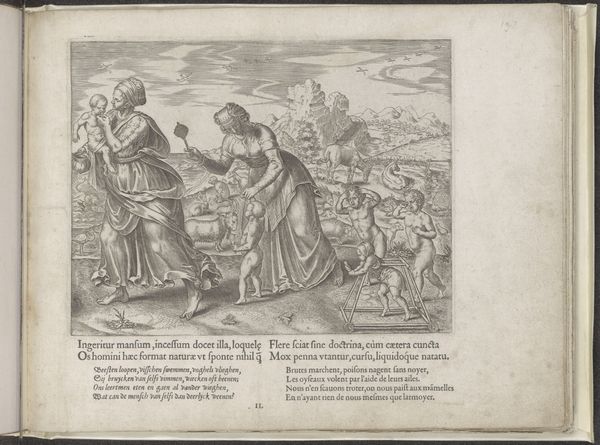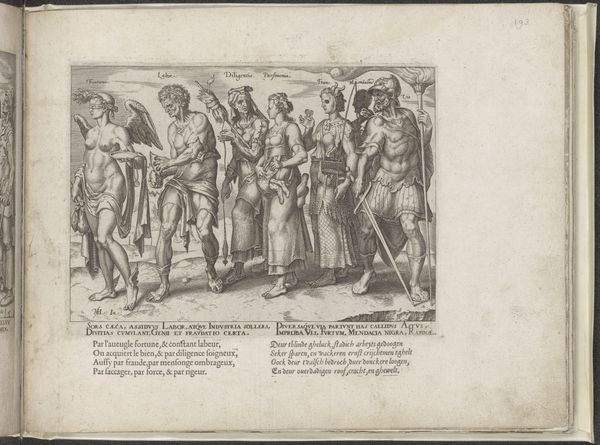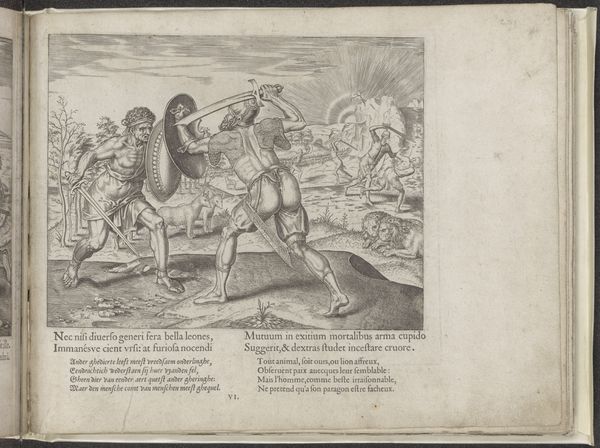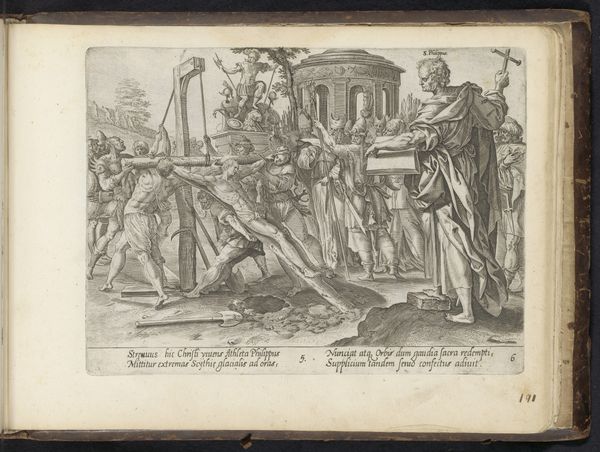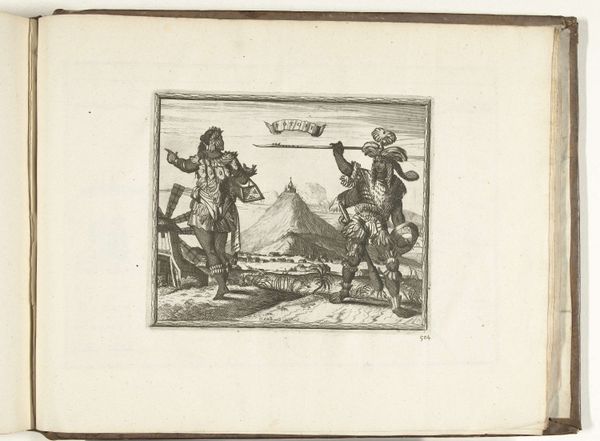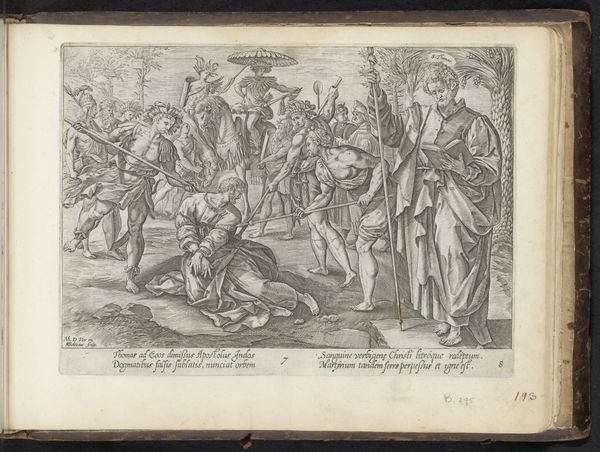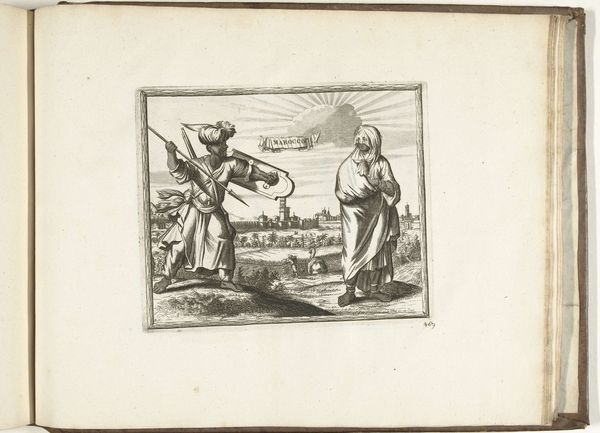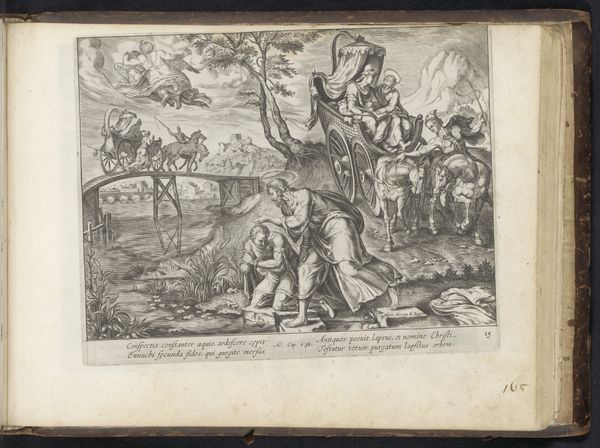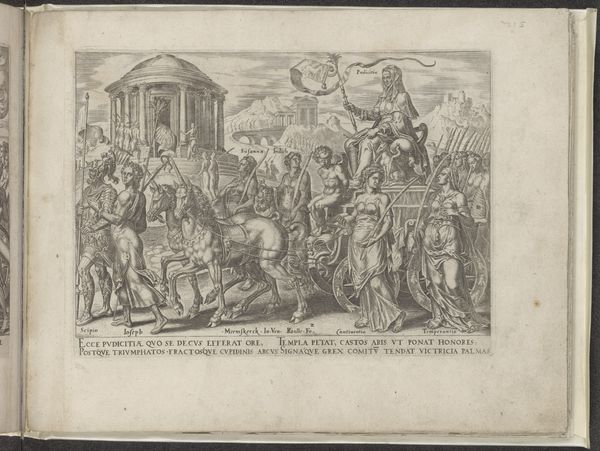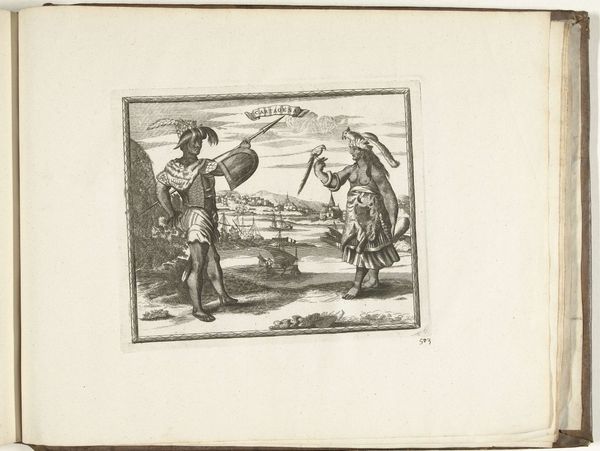
print, engraving
#
narrative-art
# print
#
landscape
#
figuration
#
northern-renaissance
#
engraving
Dimensions: height 185 mm, width 240 mm, height 264 mm, width 343 mm
Copyright: Rijks Museum: Open Domain
Curator: Here we have an engraving entitled "Armoede en een gewelddadige dood kunnen de mens overvallen", dating back to 1563 and crafted by Philips Galle. It resides here at the Rijksmuseum. Editor: A bleak scene indeed! The overall tone speaks of hardship and violence; I feel a real sense of anxiety looking at the three figures. Curator: It’s quite illustrative of the societal anxieties during the Northern Renaissance. The use of engraving as a readily reproducible medium made these visual narratives accessible to a wider audience, thereby shaping public opinion and moral consciousness about poverty. Editor: I notice that even the landscape mirrors the human suffering. Note how Galle uses dense, layered lines and shading to define forms—the ravaged clothing of each figure tells their material story through depictions of thread and weave, how worn they are. Curator: Precisely. And the material context informs our understanding of the work's message. Galle, like other printmakers of his time, relied on collaborative labor. The engraver's skill was vital, turning Galle's initial design into a repeatable image. Consider how the distribution of these prints influenced charitable and political actions related to the poor. Editor: The scale of this print likely enabled it to circulate easily as a moralizing message, almost like early photojournalism documenting societal ills, don’t you think? The text below certainly reinforces a call for action and awareness. Curator: The role of institutions in preserving and interpreting works like these is important. Museums transform objects initially made for direct political action into artifacts for historical analysis and aesthetic contemplation, thus altering their original social role. Editor: And shifts the narrative toward the role of artists and the rise of artistic expression through materiality during a very turbulent time. A fascinating study of survival depicted through art's unique ability to blend social commentary and crafted technique! Curator: I agree. Seeing this print, produced through collaborative efforts and reflective of specific period anxieties, reminds me of art’s enduring role as a mirror and agent of social change.
Comments
No comments
Be the first to comment and join the conversation on the ultimate creative platform.

